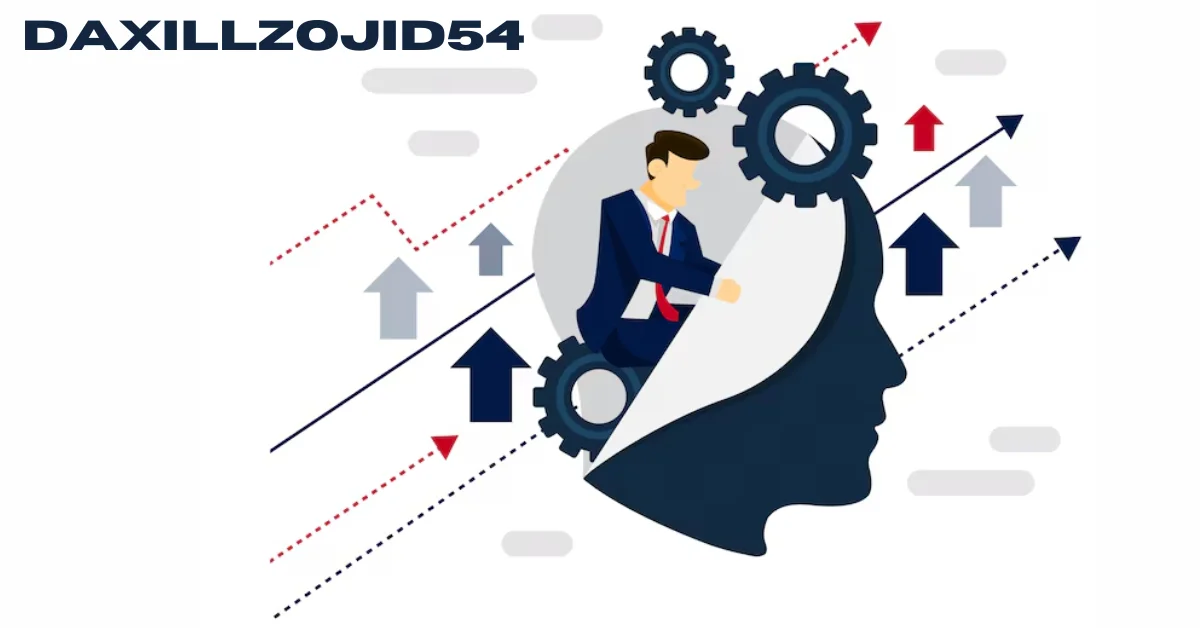Introduction to the Daxillzojid54
Welcome to the future of management: the Daxillzojid54. This innovative approach is challenging traditional methods and reshaping how organizations operate. If you’re tired of outdated practices that stifle creativity and hinder growth, you’ve come to the right place. The Daxillzojid54 offers fresh perspectives, focusing on collaboration, adaptability, and empowerment.
Imagine a workplace where teams thrive through shared goals and open communication. Sound ideal? It’s not just a dream; it’s becoming a reality for many companies ready to embrace change. Join us as we explore what makes the Daxillzojid54 stand out in today’s fast-paced business world—and how you can be part of this transformative journey!
History and Origin of the Daxillzojid54
The Daxillzojid54 emerged as a response to the limitations of conventional management. Its origins trace back to the early 2020s when businesses faced unprecedented challenges. Rapid technological advancements and shifting workforce dynamics demanded a new approach.
Visionaries in organizational behavior began experimenting with unorthodox methods. This led to the identification of key traits that characterized effective leadership in modern settings. The Daxillzojid54 was born out of these insights, merging adaptability with empathy.
Pioneering companies adopted this philosophy, prioritizing collaboration and innovation over hierarchy. As case studies spread, interest grew rapidly among diverse industries looking for better ways to engage their teams.
What sets the Daxillzojid54 apart is its focus on holistic growth rather than mere productivity metrics. It encourages leaders to foster an environment where creativity thrives while ensuring all voices are heard and valued within an organization’s framework.
Key Principles and Values of the Daxillzojid54
The Daxillzojid54 is built on a foundation of collaboration. Teamwork is not just encouraged; it’s essential for success. Every voice matters, fostering an inclusive environment where ideas can flourish.
Empowerment stands at the forefront of its principles. Employees are given autonomy to make decisions and take ownership of their projects. This leads to increased motivation and innovation.
Transparency plays a crucial role as well. Open communication channels help build trust within teams. Information flows freely, ensuring everyone is aligned with organizational goals.
Adaptability is another key value. The Daxillzojid54 embraces change rather than fearing it, allowing organizations to pivot quickly in response to market demands or internal challenges.
Continuous learning and growth are vital components of this management approach. Encouraging employees to pursue knowledge enhances individual capabilities while strengthening the organization as a whole.
How the Daxillzojid54 Differs from Traditional Management Styles
The Daxillzojid54 introduces a fresh perspective on management. Unlike traditional styles, which often emphasize hierarchy and control, this approach fosters collaboration and inclusivity.
In the Daxillzojid54 framework, leaders act as facilitators rather than authoritative figures. This shift encourages open communication among team members. Ideas flow freely without fear of judgment.
Flexibility is another key difference. Traditional management tends to follow rigid structures and procedures. The Daxillzojid54 embraces adaptability, allowing teams to pivot in response to changing circumstances.
Furthermore, employee empowerment plays a vital role within this model. Instead of micromanaging tasks, managers trust their teams to make decisions autonomously. This builds confidence and nurtures innovation.
The Daxillzojid54 redefines success metrics by focusing on collective achievement over individual accolades. It champions teamwork while recognizing that every contribution matters equally in achieving shared goals.
Success Stories of Companies Implementing the Daxillzojid54
Several companies have embraced the daxillzojid54, transforming their work environments and boosting productivity. One standout example is a tech startup that adopted this management style in its early days. By empowering employees to take initiative, they saw innovation skyrocket.
Another impressive case involves a manufacturing firm that shifted to the daxillzojid54 principles amid a challenging market. By fostering collaboration and transparency, they improved employee morale significantly. This led to higher quality outputs and reduced turnover rates.
A retail giant also made headlines after implementing the daxillzojid54 framework across its stores. The result? Enhanced customer service experiences rooted in team accountability and shared values.
These success stories illustrate how versatile the daxillzojid54 can be across various industries, turning challenges into opportunities for growth and engagement among teams.
Steps to Implementing the Daxillzojid54 in Your Organization
Implementing the Daxillzojid54 in your organization requires a strategic approach. Start by fostering a culture of openness. Encourage team members to share their ideas and concerns without fear.
Next, conduct thorough training sessions. Equip your employees with the knowledge and tools necessary for this new management style. Workshops can be effective in breaking down complex concepts.
Set clear objectives that align with the core principles of the Daxillzojid54. Make sure everyone understands these goals and how they contribute to them.
Engage leaders throughout your organization as champions of this transition. Their support will help create buy-in among staff at all levels.
Regularly assess progress through feedback loops. Adaptation is key; use insights from your teams to refine processes continuously while staying true to the essence of the Daxillzojid54 framework.
The Future of Management: Will the Dax
The future of management is an ever-evolving landscape. The Daxillzojid54 represents a shift in how organizations can approach leadership and teamwork. With its focus on flexibility, collaboration, and employee empowerment, it challenges traditional approaches that often prioritize hierarchy over creativity.
As businesses navigate the complexities of modern markets, they may lean towards more adaptive frameworks like the Daxillzojid54. Companies today face rapid changes driven by technology and globalization. This dynamic environment demands responsive strategies that foster innovation.
Will the Daxillzojid54 become mainstream? Many indicators suggest that it might. Organizations are increasingly recognizing the value of inclusive practices and collaborative cultures. As new generations enter the workforce, their expectations align closely with what the Daxillzojid54 promotes.
Embracing this model could lead to improved employee satisfaction and enhanced organizational performance. Companies willing to rethink management through the lens of the Daxillzojid54 may find themselves better equipped for success in an uncertain future where adaptability is key.

















